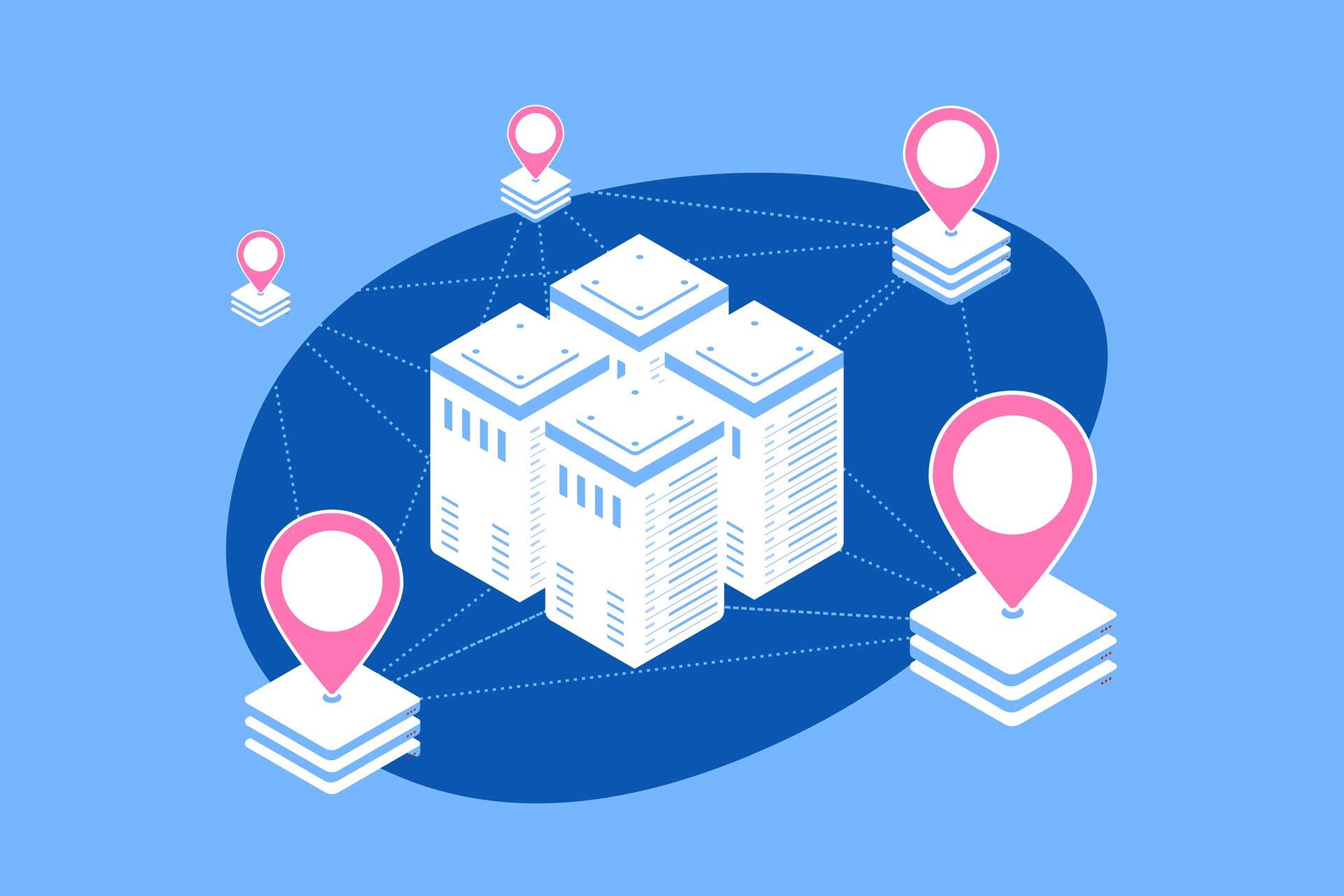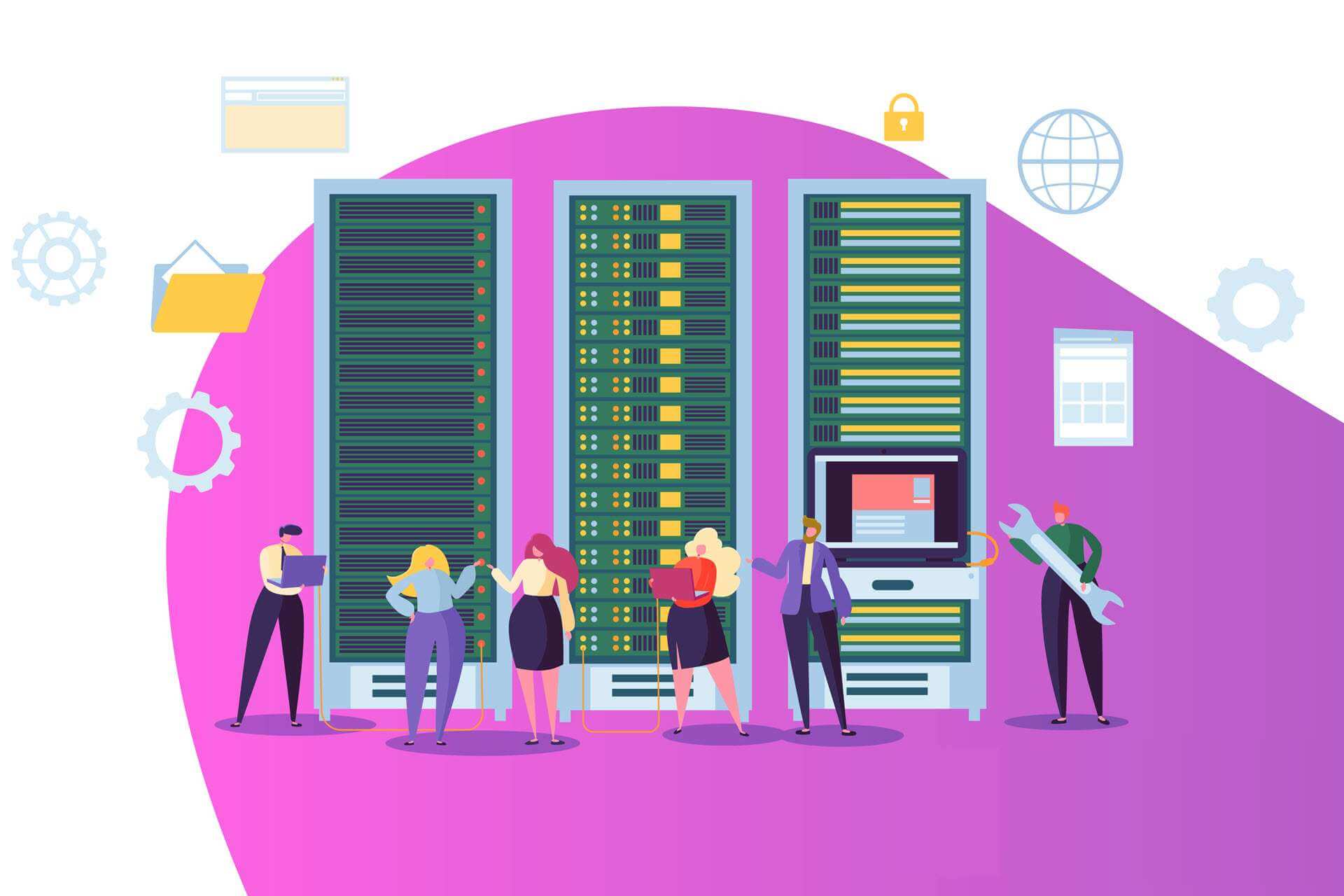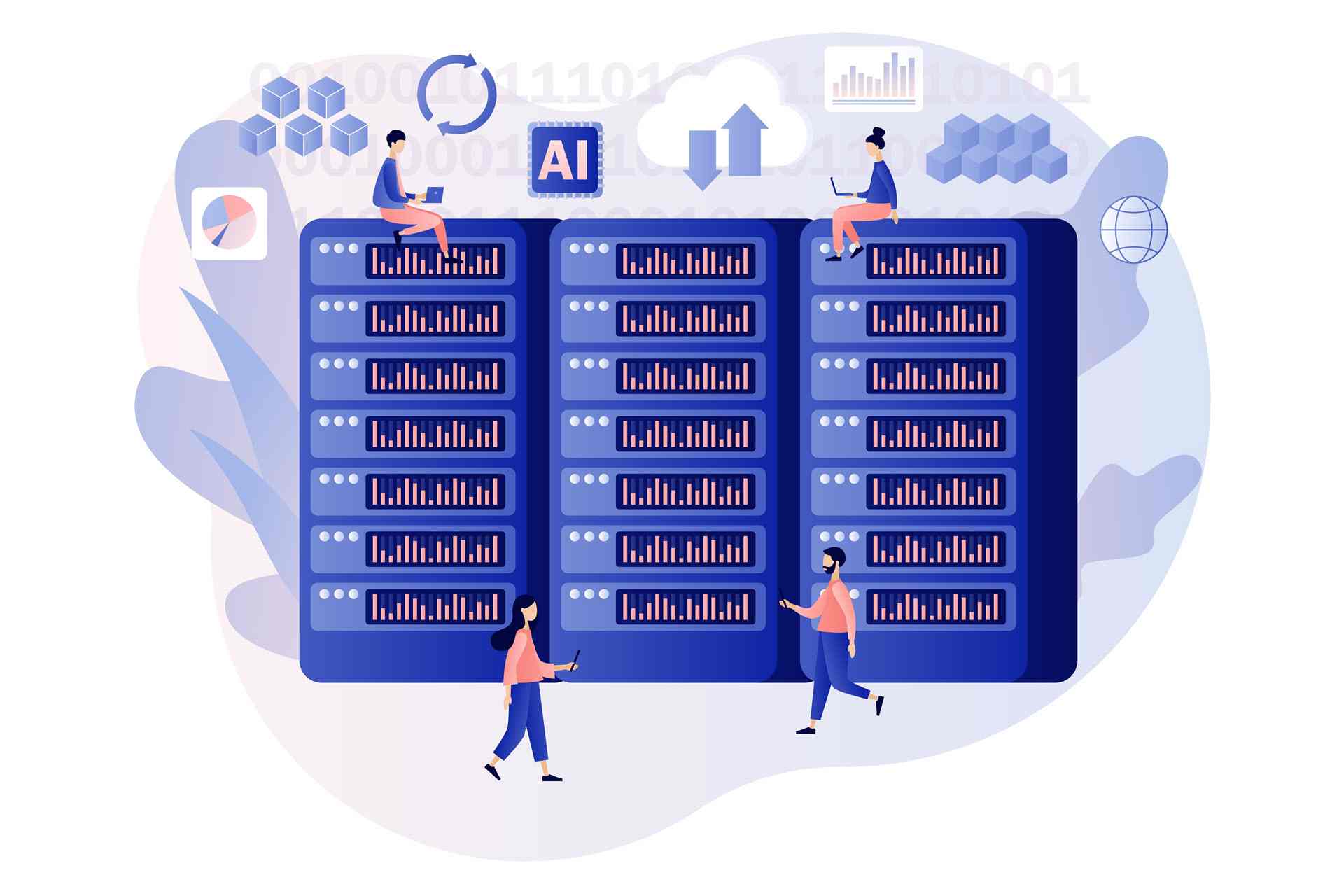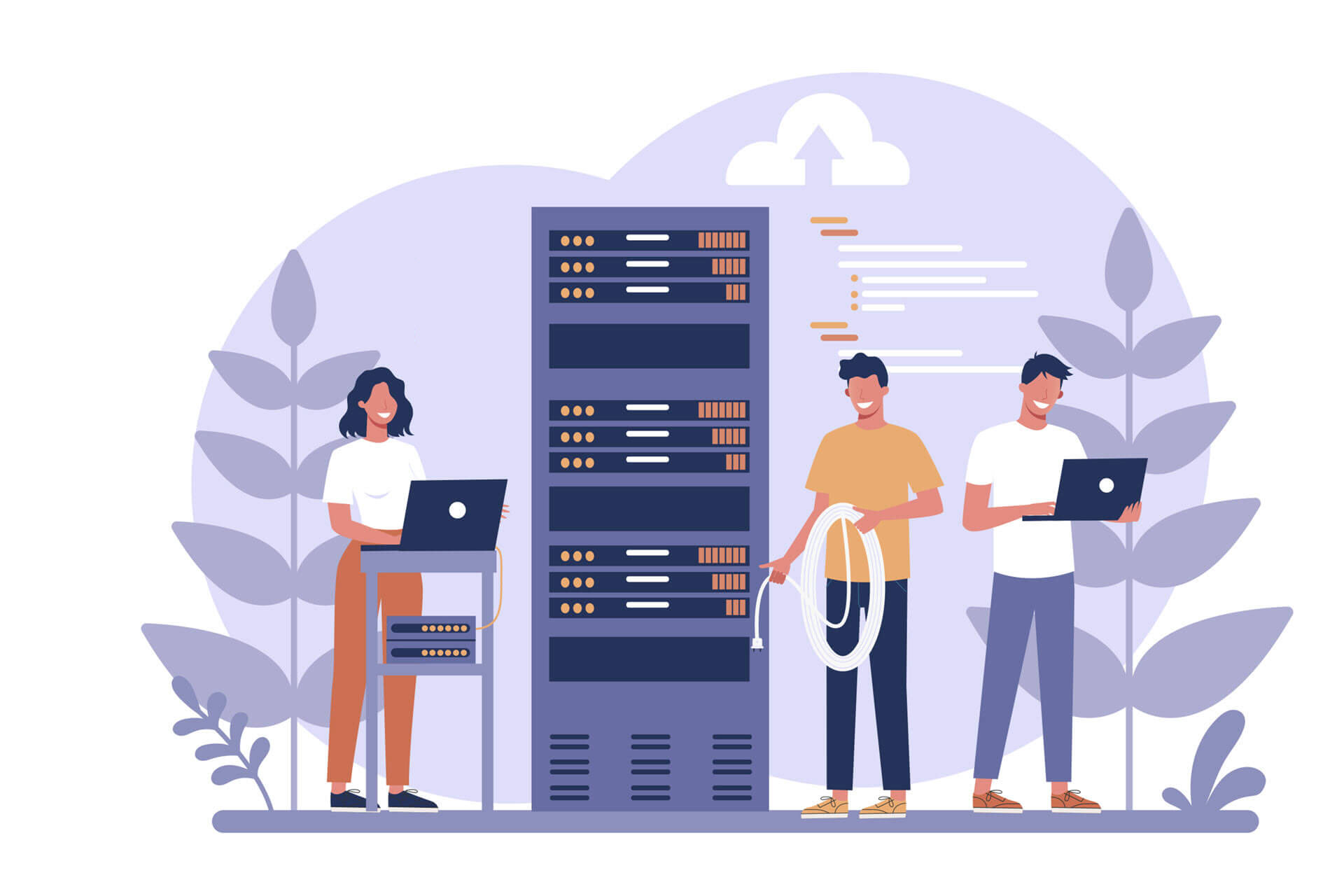Power-related issues were the direct cause of 52% of all data center outages in the last three years. Since around 54% of these incidents resulted in damages that exceeded $100,000 (16% led to losses of over $1 million), it's clear why facility owners see data center power monitoring as a top priority.
Real-time power monitoring allows operators to identify and address power-related problems before they cause disruptions. This precaution prevents unexpected downtime, prolongs equipment lifespans, and ensures continuous service availability.
This article provides an in-depth guide to data center power monitoring. Jump in to learn about the ins and outs of tracking power consumption at data centers and see how seasoned facility managers avoid costly power disruptions.
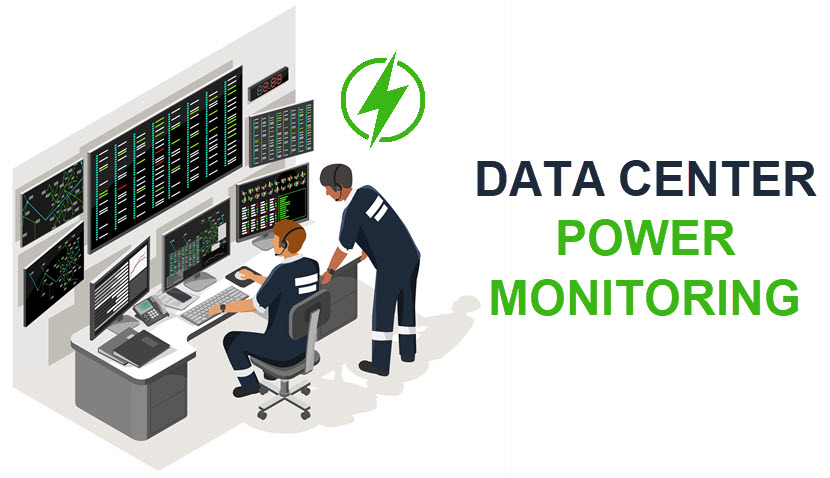
Check out our article on data center power designs for a detailed look at how organizations ensure their facilities have reliable access to stable power sources.
What Is Data Center Power Monitoring?
Data center power monitoring is the practice of continuously tracking and analyzing power consumption and performance within a data center. The main goal of this type of monitoring is to ensure efficient, reliable, and continuous power delivery across the facility while minimizing downtime and optimizing energy usage.
Data center managers can track power-related metrics of individual IT devices, specific power components, individual racks and cabinets, server rooms, or entire facilities.
Here's an overview of what metrics operators most commonly track:
- Power usage effectiveness (PUE). PUE measures energy efficiency by comparing the total power used by the facility to the power used by IT equipment alone. Lower PUE values indicate greater efficiency.
- Energy usage (kWh). This metric tracks the total amount of electricity consumed by the data center or specific components of it.
- Voltage (V). This metric monitors the electrical potential provided to data center equipment. Maintaining the correct voltage is crucial to ensuring stable operations.
- Current (Amps). This metric measures the flow of electrical current to various components. Monitoring amperage ensures equipment is receiving the appropriate amount of power.
- Carbon usage effectiveness (CUE). This metric tracks the amount of carbon dioxide emitted per kilowatt-hour of energy.
- Power factor. This metric represents the ratio of real power used to perform work (kW) to apparent power (kVA) supplied to the circuit. A high power factor indicates efficient electricity use, while a low power factor suggests inefficiencies.
- Load balancing. This metric tracks the distribution of power across circuits and equipment.
- Energy efficiency ratio (EER). EER measures the ratio of cooling output to power input. A higher EER indicates better cooling efficiency.
- Circuit capacity. This metric monitors the total capacity of each power circuit and how much of that capacity is being used.
Of all the components within a data center, cooling equipment actually uses the most power (often more than 50% of the facility's total consumption). Our article on data center cooling explains why keeping hardware at optimal temperatures is one of the most expensive and challenging aspects of running a data center.
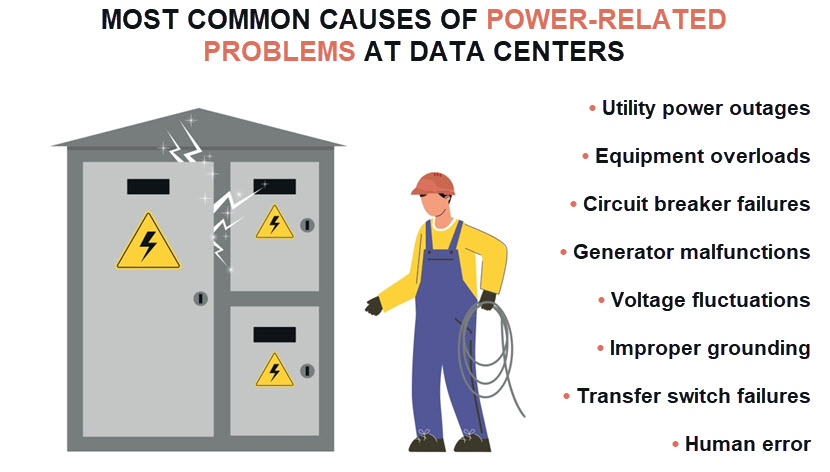
Why Is Data Center Power Monitoring Important?
Data center power monitoring is crucial to maintaining efficient and stable operations. Here's an overview of why this type of monitoring is so vital to facilities of all tiers:
- Less chance of downtime. Monitoring power usage allows operators to detect potential issues (power surges, overloads, equipment malfunctions) before they cause a full-blown outage. Real-time power monitoring directly translates into better uptime and less risk of violating terms of service level agreements (SLAs).
- Lower operational costs. Tracking energy consumption enables data center operators to pinpoint areas that waste energy and make adjustments to improve power usage. This process leads to more effective power allocation, prevents overconsumption, and reduces energy bills.
- Prolonged equipment lifespan. Monitoring power ensures that all equipment receives proper voltage and current. As a result, operators prevent power fluctuations from damaging the equipment and shortening its lifespan.
- Compliance with industry regulations. Many facilities must adhere to strict regulatory standards regarding energy usage and environmental impact (ISO 50001, Energy Star, local government mandates, etc.). Power monitoring helps collect the necessary data to demonstrate compliance with these regulations and avoid hefty fines.
- Capacity planning. Power monitoring helps data center operators understand their current energy needs and better predict future requirements. These insights enable teams to accurately assess whether the facility has enough power to support future growth without causing system overloads.
- Smaller carbon footprints. Effective power monitoring helps data centers improve sustainability by providing insights into how facilities can optimize energy consumption and lower carbon emissions.
Power monitoring also plays an indirect role in data center security. Sudden power outages and voltage fluctuations often cause equipment shutdowns, which can create opportunities for threat actors to exploit system vulnerabilities.
Power Components Monitored in a Data Center
The table below provides an overview of the most notable power components that require round-the-clock monitoring:
| Component | Role Within the Data Center | Benefits of Monitoring This Component |
|---|---|---|
| Main Electrical Feed | Brings external power from the utility grid into the data center. | Detects voltage fluctuations that could lead to equipment damage or service interruptions. |
| Backup Generators | Provide emergency power during grid outages. | Ensure reliable operation during grid failures. |
| Uninterruptible Power Supply (UPS) | Provides emergency power until the backup generator becomes operational. | Guarantees seamless transition from the grid to the backup generator. |
| Automatic Transfer Switches (ATS) | Switch power load to backup sources during grid failure. | Ensure uninterrupted transitions between power sources. |
| Power Distribution Units (PDUs) | Distribute electricity from the primary power source to equipment. | Prevent overloads and ensure balanced power distribution. |
| Remote Power Panels (RPPs) | Distribute power from PDUs to specific racks and equipment. | Maintain balanced distribution and avoid localized overloads. |
| Transformers | Step down high voltage from the utility grid. | Prevent overheating and failures due to excessive loads. |
| Circuit Breakers | Protect electrical circuits from overloads. | Prevent electrical damage by detecting overloads and faults. |
| Busbars and Switchgear | Distribute electricity across circuits and manage switching between power sources. | Ensure proper load distribution and detect system inefficiencies. |
| Fuse Panels | Protect circuits from excessive current by disconnecting in case of overload. | Maintain circuit safety and prevent damage from excessive current. |
| Cooling System Power Components | Power the systems that regulate facility temperatures. | Ensure consistent and cost-effective power delivery to cooling equipment. |
| Voltage Regulators | Maintain a constant voltage level to stop fluctuations. | Prevent equipment damage caused by voltage instability. |
| Capacitors | Store electrical energy and smooth out fluctuations. | Ensure stable power flow and prevent fluctuations from impacting performance. |
| Power Busways | Provide modular power distribution to equipment. | Improve load management and identify faults before they cause failures. |
Prefer not having to worry about all these components? Consider offloading that responsibility by renting servers from or collocating hosting equipment at a third-party data center.
How Is Power Monitored in a Data Center?
Data center operators monitor power by using a combination of hardware and software to measure the electrical consumption and distribution throughout the facility. To do that, staff members use various power monitoring devices that continuously gather real-time data on:
- The total consumption of electrical power across the data center.
- The voltage supplied to the equipment.
- Power quality (e.g., frequency, phase balance, harmonic distortion).
- Electrical current flows.
- The ratio of real power used to the apparent power drawn from the source.
Devices log and store monitored data for future analysis, which helps teams track trends, identify recurring issues, and plan for capacity upgrades. Most operators also use monitoring devices to set predefined thresholds for:
- High power consumption.
- Power quality issues (e.g., voltage sags, surges, frequency deviations).
- Irregularities that could lead to equipment damage or operational failures.
- Temperature-related issues.
Many data center operators use monitoring software to automate responses if a system exceeds a certain threshold. Common automated responses to power-related problems include:
- Switching to backup power during an outage or critical power failure.
- Distributing power demand to prevent overloads.
- Automatically disconnecting problematic circuits to contain the impact of power issues.
- Shutting down non-critical systems to reduce the load on the power supply.
- Regulating voltage levels to ensure stable voltage across all equipment.
Many data centers use Data Center Infrastructure Management (DCIM) software to centralize and streamline power monitoring. DCIM systems integrate data from all monitoring devices to provide a centralized view of power usage across the facility. DCIM tools also generate detailed reports on energy usage and efficiency, which helps make informed decisions when optimizing power consumption.
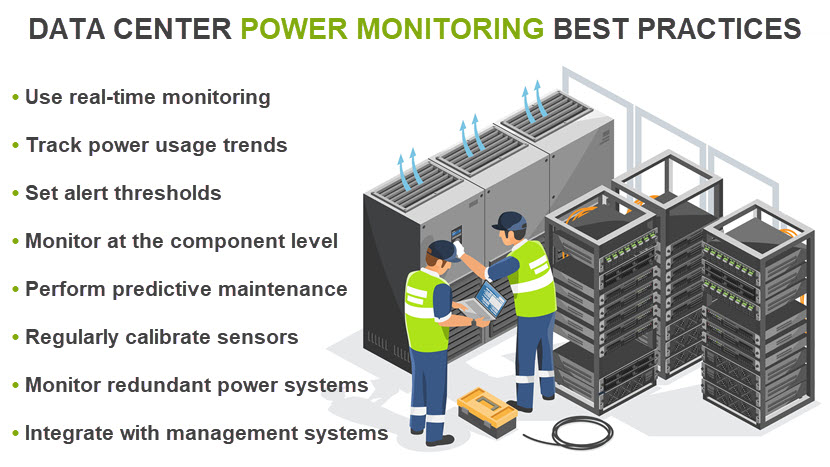
Data Center Power Monitoring Solutions
Data center power monitoring solutions are specialized tools designed to provide comprehensive visibility and control over power consumption. These solutions help facility managers optimize energy efficiency and prevent power-related failures.
There are four different types of power monitoring solutions:
- Real-time monitoring solutions. These tools provide immediate feedback on power consumption and alert operators whenever they identify anomalies.
- Predictive analytics solutions. These tools use artificial intelligence (AI) and regression algorithms to anticipate power requirements and likely system failures.
- Historical data analysis systems. These solutions track energy usage trends over time to help with long-term planning and capacity management.
- Automated control systems. These solutions automatically take action when systems exceed predefined power-related thresholds.
Most data centers rely on third-party solutions, as creating a custom tool takes a lot of skill, resources, and time. Here's an overview of some of the market's top data center power monitoring solutions:
- Schneider Electric EcoStruxure Power Monitoring Expert. EcoStruxure is a comprehensive power management platform that enables real-time monitoring, analytics, and control of power systems in a data center.
- Eaton Intelligent Power Manager (IPM). Eaton's IPM software offers real-time power monitoring, load balancing, and various energy-saving modes for small-to-medium facilities (i.e., those with fewer than 25 UPSes and PDUs).
- Vertiv Environet Alert. Environet Alert provides real-time visibility into power and environmental data across the data center.
- Panduit SmartZone G5 Intelligent PDUs. Panduit's G5 PDUs offer intelligent power monitoring with real-time data on power usage, environmental factors, and equipment performance.
- Raritan Power IQ for Data Centers. Raritan's Power IQ aggregates data from PDUs and UPSes to provide real-time monitoring of power, energy, and environmental metrics.
- Siemens SENTRON Powermanager. The Powermanager provides detailed insights into power consumption and quality across the data center.
Want to improve your IT monitoring? Check out our articles on the best server and cloud monitoring tools to see what solutions you can add to your toolchain.
Data Center Power Monitoring Cost
The cost of monitoring power at a data center depends on several factors. Here's what primarily determines the cost:
- The size of the data center. Larger facilities require more monitoring equipment to cover the increased number of servers, racks, and networking equipment.
- The complexity of the monitoring system. The more features a monitoring system has, the higher the cost. Tools with advanced features (predictive analytics, alerting capabilities, integration with other systems, etc.) cost more to acquire and set up.
- Specific industry requirements. Some data centers, especially those in highly regulated industries like finance or healthcare, require more advanced monitoring capabilities to comply with industry regulations.
Implementing a power monitoring system involves significant upfront costs. The initial cost ranges from a few thousand to several hundred thousand dollars, depending on the scale and sophistication of the monitoring system. Here are the main factors that determine the upfront cost of setting up a power monitoring system:
- Equipment costs. You must purchase the necessary devices, meters, and sensors. High-quality equipment can range from a few hundred to several thousand dollars each.
- Installation costs. Installation costs vary based on the complexity of the setup and technicians' hourly rates.
- Staff training. Teams often require training on how to use power monitoring systems effectively and safely. These training sessions cost time and money to organize.
- Software costs. Many power monitoring solutions require specialized software for data analysis and reporting. Licensing fees vary widely, from a few hundred to thousands of dollars annually, depending on features and deployment scale.
Data center power monitoring also involves considerable ongoing costs. Facilities require regular maintenance of monitoring equipment to ensure accuracy and reliability. This process commonly involves routine calibration (typically done quarterly), software updates to add new features or security patches, and technical support.
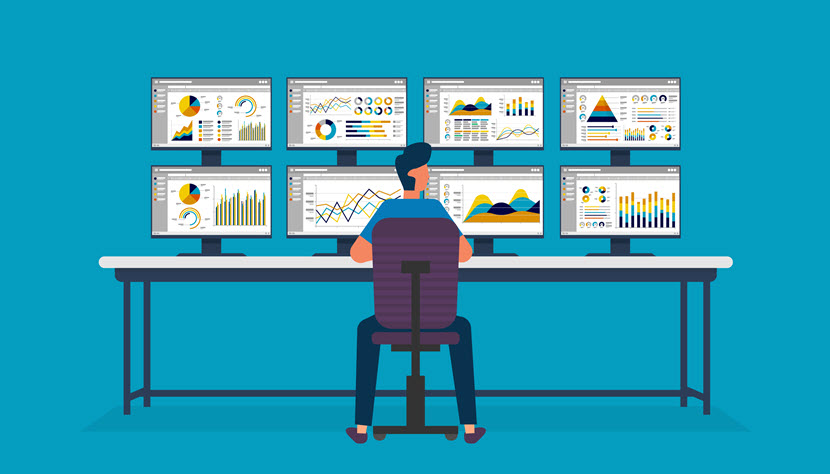
An Essential Aspect of Data Center Management
Regardless of whether you run just a few on-site servers or are in charge of a full-blown hyperscale data center, your IT staff must keep a close watch over power usage. Proactive power monitoring will help you avoid costly disruptions, keep critical infrastructure in good health, and meet your uptime goals.
